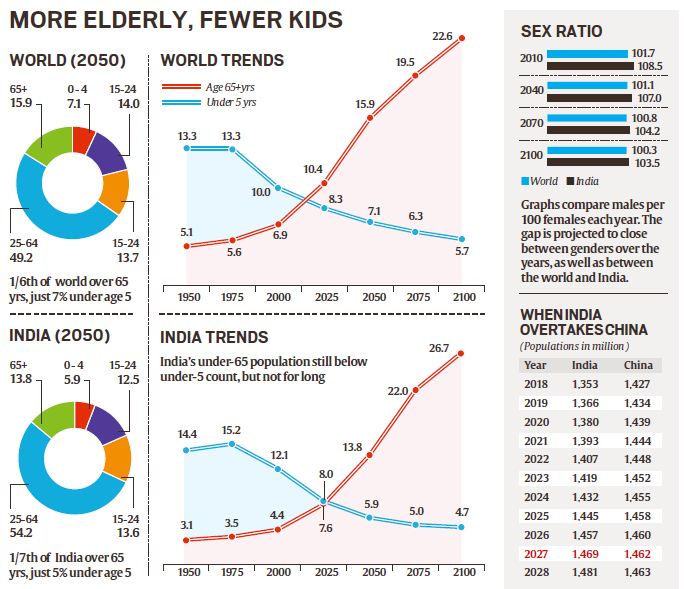First Understanding the Models of E-Commerce – Marketplace Model
- E-commerce Company provides an IT platform on a digital or electronic network to act as facilitator between buyers & sellers without warehousing the products.
- It aggregates various retailers/brands and provide a sales channel (offers shipment, call centre, delivery and payment services) to them but cannot exercise ownership of the inventory.
- It allows for a superior customer service experience, as many smaller brands have greater outreach now, with their fulfillment processes taken care of by online marketplaces. E.g. E-Bay/Shopclues etc
- 100% FDI is allowed in marketplace model of e-commerce.
Inventory Model
- Products are owned by the online shopping company. The whole process end-to-end, starting with product purchase, warehousing and ending with product dispatch, is taken care of by the company.
- Allows speedier delivery, better quality control and improved customer experience and trust. But, it restricts cash flow and is difficult to scale
- FDI in multi-brand retail is prohibited, including e-commerce retail (B2C); E.g. Jabong, YepMe etc.
Recently, government introduced changes in e-commerce norms which are said to be clarificatory in nature and are not new restrictions.
Changes introduced by the new rules
- From February 1, 2019, e-commerce companies running marketplace platforms:-
- Such as Amazon and Flipkart – cannot sell products through companies, and of companies, in which they hold equity stake.
- It put a cap of 25% on the inventory that a marketplace entity or its group companies can sell from a particular vendor. Inventory of a vendor will be deemed to be controlled by e-commerce marketplace entity if more than 25% its purchases are from the marketplace entity or its group companies.
- No seller can be forced to sell its products exclusively on any marketplace platform, and that all vendors on the e-commerce platform should be provided services in a “fair and non-discriminatory manner”.
- Services include fulfilment, logistics, warehousing, advertisement, cashbacks, payments, and financing among others.
- The marketplaces will not be allowed to offer deep discounts through their in house companies listed as sellers (check price cartelization).
- E-commerce marketplace entity will be required to furnish a certificate along with a report of statutory auditor to Reserve Bank of India, confirming compliance of the guidelines, by September 30 every year for the preceding financial year.
- E-commerce entities will have to maintain a level playing field and ensure that they do not directly or indirectly influence the sale price of goods and services.
The above mentioned rules explain certain principles laid down in a 2017 circular on the operations of online marketplaces, wherein 100% foreign direct investment through automatic route is allowed. Some other discussion points in the circular were as follows:
- Scope of Marketplace Model: E-Marketplace would include warehousing, logistics, order fulfillment, call
centre, payment collection etc.- The move was aimed at bringing new entrants/smaller players in the e-commerce business.
- It would also increase the need for office spaces, warehouses & logistics, providing a boost to the real estate business.
- It would also check tax evasion through illegal warehousing.
Predatory Pricing
- Predatory pricing (dominant player reducing prices to such an extent to edge out other players) is an anti-competition practice under Competition Act 2002. The government would appoint a regulator to check discounts offered by e-commerce players, so that they don’t sell below market prices & compliance with FDI norms.
Impact on E-commerce companies (UPSC IAS)
- Most of e-commerce firms source goods from sellers who are related 3rd party entities. E.g. WS Retail contributes to 35-40% of Flipkart’s overall sales. Cloudtail India, the biggest retailer operating on Amazon, has its 49% equity held up by Amazon or its subsidiaries. Amazon also holds up 48% equity in another major retailer, Appario Retail. This will impact backend operations of e-commerce firms, as group entities would now have to be removed from the e-commerce value chain.
- Also, players like Amazon and Flipkart, who have their private labels, will not be able to sell them on their platforms if they hold equity in the company manufacturing them.
- Currently, most of the e-commerce are burning cash to attract consumer base and hence, are in deep losses. In the long run, this will help large companies build a viable business rather than just depend on discounts.
Retailers
- The absence of large retailers will bring relief to small retailers selling on these platforms. Traditional brick-and-mortar stores, who now find it difficult to compete with the large e-commerce retailers with deep pockets, will become more competitive.
- Marketplaces are meant for independent sellers, many of whom are MSMEs (Micro, Small & Medium Enterprises). These changes will enable a level playing field for all sellers, helping them leverage the reach of e-commerce.
- But, it may also become difficult for small start-ups to raise funds from big e-retailer companies. Also, mandatory listing of inventory on different platforms may increase sales cost for MSMEs.
- Consumers: Consumers may no longer enjoy the deep discounts offered by retailers that have a close association with marketplace entities.
- Employment: The threat of job losses in the supply chain network has emerged as a major concern, as the number of e-commerce orders will go down, warehouse expansion plans may take a hit and the utilization of delivery executives will reduce, leading to significant job losses.
- Growth of the sector: By 2022, the size of digital economy in India will be approximately $ 1 trillion and by 2030, it could constitute almost 50% of the entire economy. Licensing and price controls may depress a fast growing sector
- International Trade Outlook: As 71 members led by countries like China, Japan and the US began exploring possible WTO framework on free cross-border e-commerce at Buenos Aires ministerial (2017), the new guidelines preempt any possible obligations on e-commerce imposed by WTO. It would enable Govt. to take a stand in international trade negotiations and discussions, which is fully cognizant of the need to preserve flexibility and create a level-playing field for domestic players.
A Way Forward (UPSC IAS)
- E-Marketplaces should change their business model and begin to look at franchise channels, rather than equity investments channels, to do business in India.
- The Government should come out with an E-Commerce policy which establishes a commonly accepted definition of e-commerce, provides a level playing field for domestic & foreign businesses. Draft E-Commerce Policy has already been submitted by the commerce ministry.
- A single legislation should be enacted to address all aspects of e-commerce so that the legal fragmentation seen across the various laws is reduced, viz. the Information Technology Act, 2000, Consumer Protection Act 1986 etc.
- Setting up an accreditation system for vetting e-commerce platforms which adhere to good business practices is the need of the hour.











